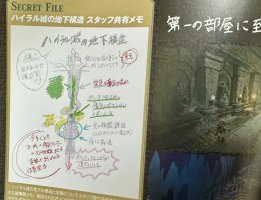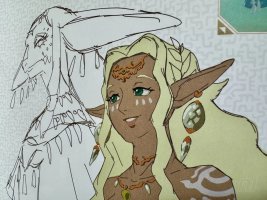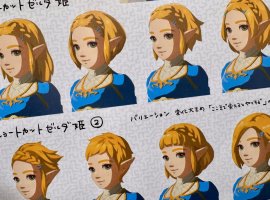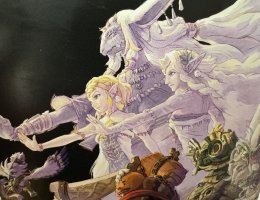Official Review
Published by Ambit in Japan and written by Japanese magazine Nintendo Dream's editorial staff with an overview from Nintendo, Master Works is the follow-up to Breath of the Wild's companion book titled Creating a Champion in the West. It's unknown what alliterative name Master Works might have in the West, but readers of that book will know what to expect with Master Works: splash pages of official art, hundreds of never-before-seen pieces of concept artwork along with designer notes and insights, and a detailed encyclopedic section examining the culture and mysteries of Hyrule.
Master Works clocks in at a meaty 464 pages, 40 pages more than Creating a Champion. Diehard fans of Tears of the Kingdom will undoubtedly be satiated by the sheer amount of fantastic art and intriguing trivia, but those who want concrete answers on the messy lore and timeline of the series may be left with more questions.
A Work of Art
The bulk of the book is housed in Chapter 2: Making, which showcases over three hundred pages of concept artwork and background information about the art direction and development. It's here where your eyes are likely to bulge at the newly revealed concept art including everything from alternate Japanese-inspired designs for Ganondorf to the elaborate blueprints of the dungeons. It's always a thrill to turn the page and come across something that's never been revealed or discussed, such as wildly different designs for Mineru's mech or the original sketches for the secret stones which were based on dragon fetuses.
Much of the concept art features hand-scrawled messages pointing out specific elements, and there are often "Designer's Notes" that delve into the behind-the-scenes thought process. It's these short paragraphs that dish out interesting factoids. Did you know that getting Sonia's eyes just right was the most difficult part of her design? That the Ember Armor is based on the Georgian traditional chokha? Or that the original Hyrule Castle in ancient times was only two storeys so as to not seem extravagant?
Chapter 2 is also home to "Background" pages, which focus on specific elements of the game like monsters, clothing, Zonai devices, and even food. These are not written from the point of view of the developers, but instead come off almost as if penned by a historian within Hyrule itself. We would have preferred a deeper look at these aspects through the voice of the artists and designers, but these pages do flesh out the nuts and bolts of Hyrule in interesting ways.
The Making chapter gives readers so much new information, but one can't help but wish there was even more. Some striking concept art is presented with very little explanation, such as Hinox originally having elaborate metal hats in lieu of their club-like horns. There's a full page dedicated to art of the Ancient Hero's Aspect, a hot topic among franchise aficionados, yet there are no notes about the origins of its design. Master Works doesn't play all of its cards, but still reveals enough to keep each page exciting.
Hylian History
The final chapter of the book is labelled History, and it's here where Zelda lore hounds will jump to first, hoping to find an end-all-be-all solution to the timeline and the many other discrepancies in the game. The History section plays it safe, not doling out any major revelations but simply building upon what's already presented in the game. There are certainly some lore tidbits that will make you raise your eyebrows, such as learning that the Gerudo ceased their custom of making males the king after Ganondorf, but like the "Background" pages they are presented as theories from a Hylian historian rather than facts.
Deep-cut lore questions are definitely still touched upon, like the connection between the Zonai and the barbarian tribe of the Faron region. But instead of a definitive explanation, it theorises that the barbarians could be Zonai who did not ascend the sky, or Hylians who worshiped the Zonai over Hylia.
The History section is eager to give details on what you already know, but only poses questions for some of the juicier secrets. The book closes with a lengthy interview between producer Eiji Aonuma, director Hidemaro Fujibayashi, and art director Satoru Takizawa. Readers get to unravel the game's beginnings and it's filled with headline-generating trivia like the original name being 'Tears of the Dragon', Ultrahand being the first gameplay concept discussed, and figuring out the final boss battle before almost everything else. Any sit-down interview with Nintendo devs is tremendously valuable, and this eight-page talk doesn't disappoint.
The Legend of Zelda: Tears of the Kingdom - Master Works is out now in Japan. There's no word on a Western release yet, but we'll be sure to let you know when we hear any news.





